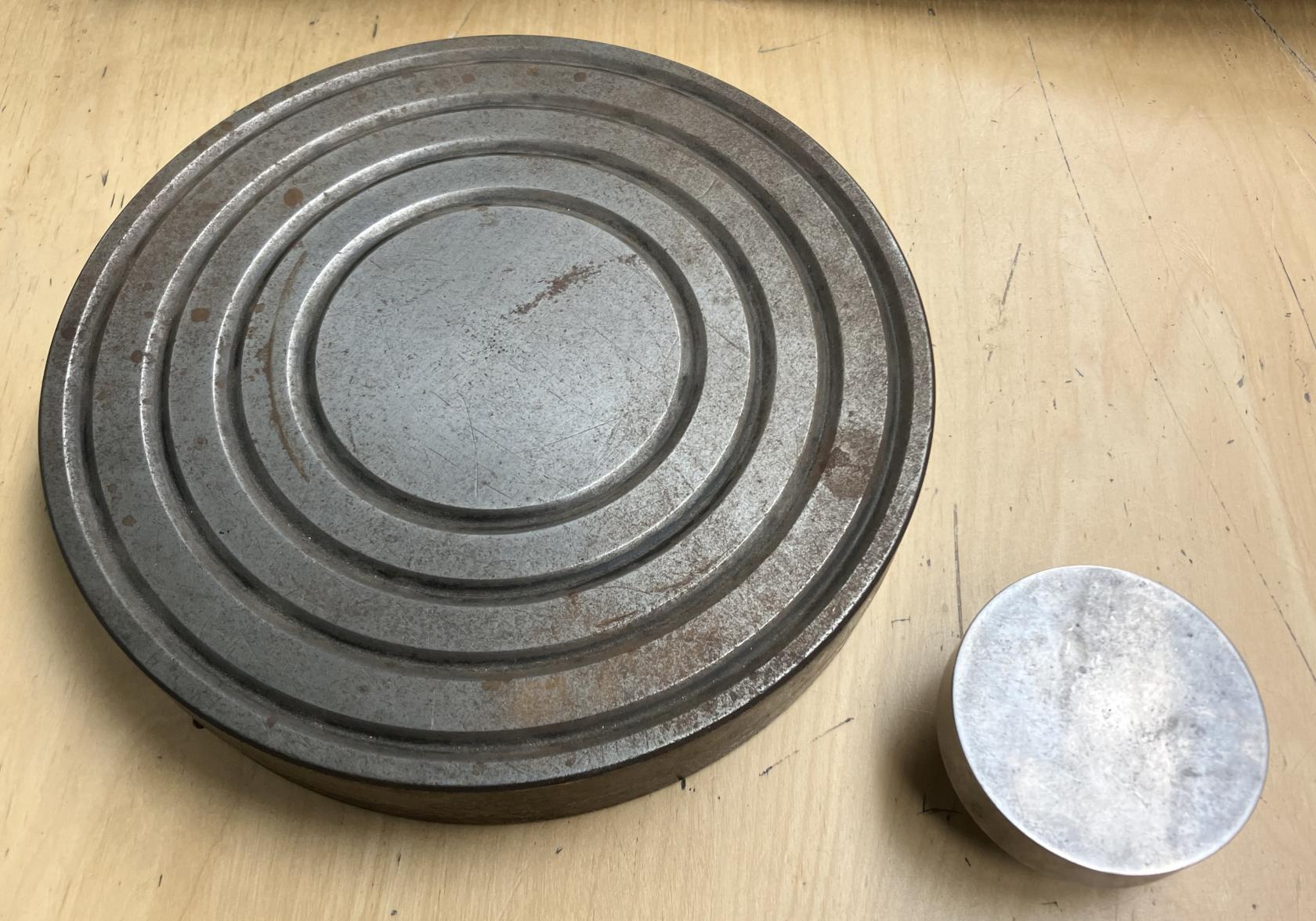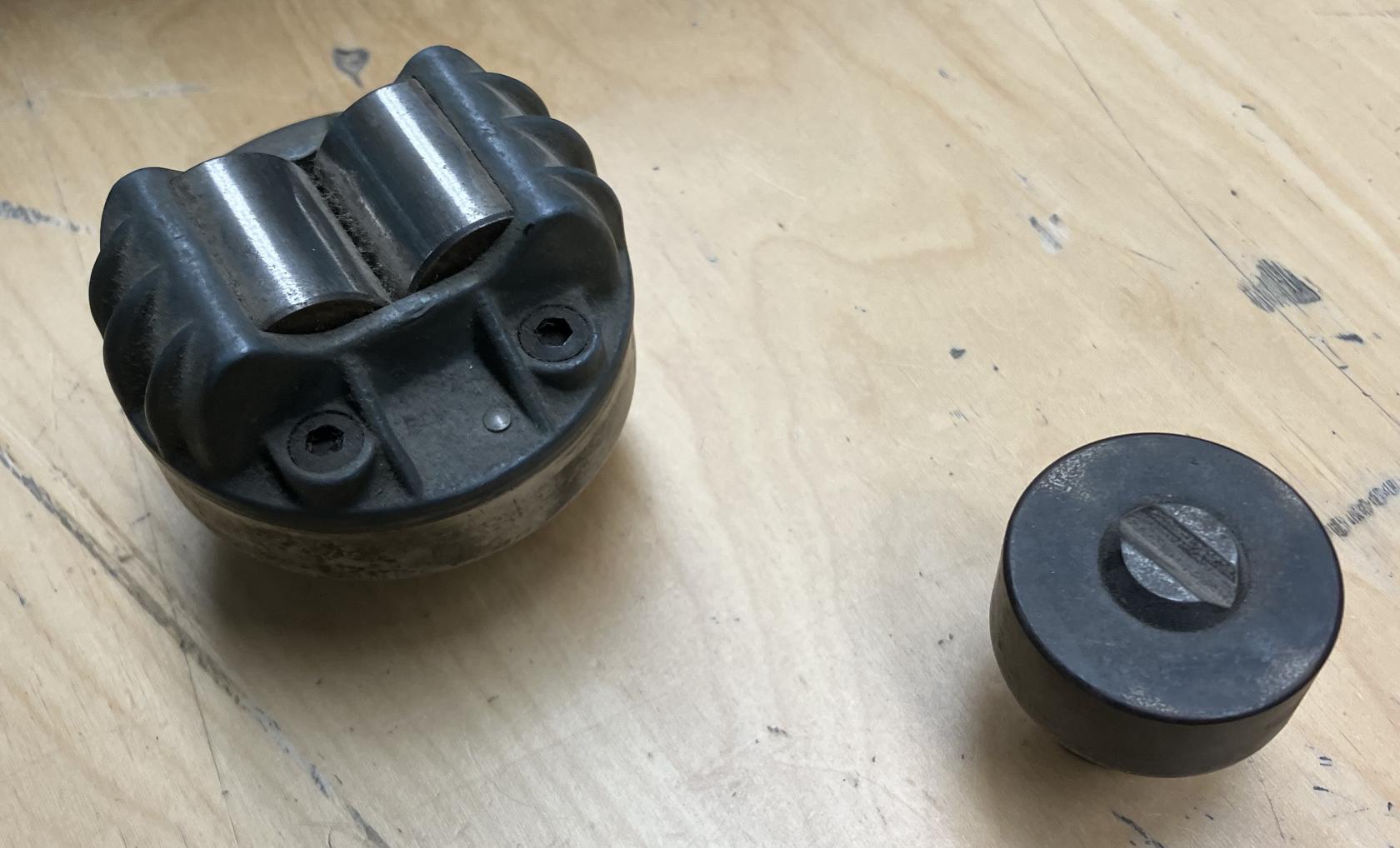Tool Tutorial
Introduction
The Rockwell hardness tester is primarily for testing the hardness of steels.
The hardness tester has two functions in the shop:
- Test if materials are soft enough to be cut/machined on shop tools.
- Test if a hardening process was successful.
How the Hardness Tester Works
The hardness tester presses a diamond into the metal to take the reading, and the tester measures the amount of resistance offered by the material under test.
The diamond tip is fragile, and must be treated with upmost care when loading/unloading the part to be tested.
The process of testing hardness will leave a small indentation in the part. It is best to test hardness in an inconspicuous area.
Rockwell B and C Scales
By swapping out the indenter tip, the hardness tester can test for two different scales: Rockwell B (100kg, suitable for softer material) and Rockwell C (150kg, suitable for steels).
The shop hardness tester is set up with a diamond tip. The diamond tip is calibrated for testing the Rockwell C scale.
If you need to test the hardness of a material with the Rockwell B scale, pleasee contact a member of the maintenance crew.
These instructions are for the Rockwell C scale.
Hardness Values and Shop Safety
An important function of the hardness tester is to test unknown materials to make sure they won't damage shop tools.
If the material doesn't register on the C scale (a value of zero or below), we can safely machine the material on any of our tools.
If the material registers above 10 on the C scale, we need to be careful how we machine the material with our tooling - our tools might not be able to machine the material without excess care.
Notes
Safety
- Use eye protection.
Common Hazards
If there is a weakness in the material being tested, the material may chip under pressure, and the debris may be ejected from the part at great speed. Always wear eye protection when using the hardness tester.
Care
Be careful of the C (diamond) indenter. This is a precision part, and bumping or crushing the indenter can reduce the accuracy of the machine.
Be careful of the granite block. The granite block is a precision surface, and should be protected by the cover at all times while using the hardness tester.
Tooling
Anvils and test plates are located on the shelf below the hardness tester. indenters are located in the draw cabinet next to the hardness tester.
Materials
Use the hardness tester with hard metals like steel.
Do not use this tool with soft metals, plastics, or wood.
Do not use this tool with any ceramics.
Parts of the Tool
Annotated Image(s)
Anvil
The surface that holds the workpiece for testing. Flat anvils are used for square workpieces, v-anvils are used for round workpieces.
Elevating Screw Handle
Used to raise or lower the anvil. Follow the stickers on the base of the tester for raising and lowering the anvil.
Dials
Both dials are used to calibrate the minor load, using the large and small dial hands. Under major load, the large dial hand reports the hardness rating.
Bezel
Sets a zero with the minor load, and reports hardness under the major load.
Load Lever
Applies and releases the major load.
Basic Operation
Setting Up
Remove the cover form the tester.
Make sure the tester is clean, level, and securely mounted.
Use safety glasses—small fragments can break off harder materials.
Prepare the Workpiece
The surface of the workpiece must me:
- Clean (free from oil, paint, rust).
- Flat and smooth (no mill scale or burrs).
The workpiece material must:
- Be thicker than 3 mm (1/8").
- Be wide enough to avoid testing too close to edges. All testing must be done more than 2.5 mm from any edge.
- Have a flat testing area paced 3+ mm from other indentations. Testing to close to an existing indentation may give incorrect results.
Workholding
Install an appropriate anvil.
When installing or removing any anvil, be very careful to not contact the tip of the indenter.
For most applications, select the appropriate flat anvil:
- Large flat anvil
- Small flat anvil
Choose an anvil that best supports the workpiece. At Protohaven, the small flat anvil is usually installed in the tester.
For round stock, select the appropriate v-anvil:
- Tiny v-anvil
- large v-anvil
Choose an anvil that best supports the workpiece.
Do not clamp a workpiece to an anvil; the workpiece should rest solidly on the anvil by weight alone.
If material is longer or imbalanced, you may have to build a support structure to keep the material equally balanced on the anvil. This can be a stack of wood with a machinist jack, or anything else that helps achieve the height. Do not use dirty/crumbly objects, such as bricks or cinder blocks. Be very careful with the granite surface.
Do not use testing anvils to support workpieces. The testing anvils are special materials that are used in calibrating the tool. They should not be used as general purpose anvils.
Using the Tool
Load the Sample
-
Place your part flat on the anvil.
-
Turn the elevating screw handle slowly to raise the anvil and part until it just contacts the indenter.
Apply the Minor Load
-
Continue slowly turning the elevating screw until:
-
The small needle reaches the preload mark. This is straight up.
-
The long pointer settles near vertical (±5 divisions).
-
-
Wait 2–3 seconds for the load to stabilize.
Zero the Dial
Rotate the outer dial bezel so the long pointer aligns exactly with 0 (zero) on the outer (black) scale.
This is your reference for the HRC reading.
Apply the Major Load
-
Slowly push the load lever back to apply the major load.
-
Wait for the needle to stop moving.
-
Dwell for 5 seconds to allow the indentation to form fully.
Remove the Major Load
-
Gently pull the load lever forward to return to the minor load (10 kg remains).
-
Do not touch the elevating screw.
Read the Hardness Value
Read the number indicated by the long pointer on the outer black scale.
This is your HRC value for the material under test.
There are charts in the vicinity of the hardness tester to help interpret the result.
Multiple Tests on the Same Workpiece
If you want to perform multiple tests on the same workpiece, reposition the part so that the indenter contacts a different part of the testing surface, and repeat the testing procedure. Choose a new spot that is at least 3mm away from any previous test. Testing too close to a previous indent may invalidate the test.
Remove the Part
Turn the elevating screw to lower the anvil and remove your part
Be careful not to crush the indenter by raising the anvil.
Cleaning Up
- Lower and remove the anvil.
Be careful not to crush the indenter by raising the anvil.
- Put away all other anvils, if necessary.
anvils, - Reset the machine to test HRC, if needed.
- Cover the tester.
- Make sure the area is clean.


